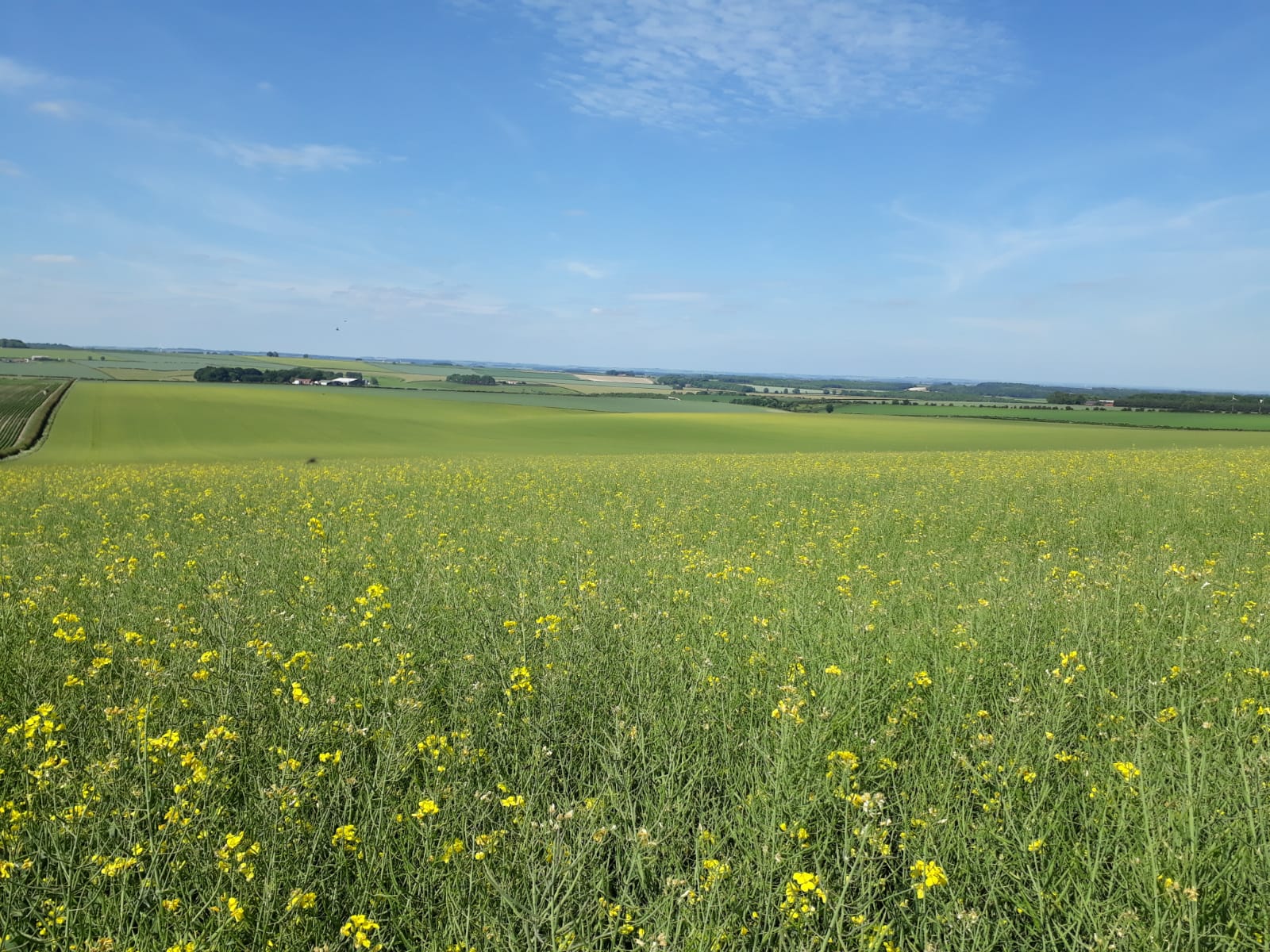
Oilseed Rape establishment in 2020 was generally much more successful than in 2018 or 2019. Adult Cabbage stem flea beetle (CSFB) damage was reduced on the whole, probably due to adequate soil moisture which allowed establishing crops to grow away from damage. Many growers opted for early drilling dates to minimise the risk of damage from adult feeding and to enable vulnerable crop stages to precede peak CSFB migration. Those who opted for early September drilling dates appeared to fair worst, because a dry period coincided with high CSFB pressure, causing some crops to be lost. The early drilled crops developed very forward canopies with some enormous crops entering winter.
Analysis of historic weather patterns and OSR yields, in a study funded by AHDB, have revealed that high yielding seasons are associated with a warm October, dry December, warm minimum March temperatures, dry/sunny April and a wet/cool May. This season we have experienced average October temperatures, a wet December, warm March, very dry/sunny April and a wet/cool May. So three of these five important weather factors have been favourable for high yield, with one negative (wet December) and one neutral (October temperature). Previously, high yielding seasons such as 2011 and 2017 have had two or three of the key weather factors positive for yield.
Whether this prediction of high yields will come true will depend on several factors. One of these is whether the negative impact of the wet winter causing waterlogged conditions out-weighs the benefits of a warm March, sunny/dry/cool April and cool/moist May. Water-logging inhibits root growth and function and will have more serious effects on heavy poorly drained soils and for late drilled, backward crops which had produced a shallower root system by winter. Another unknown is whether the late spring frosts had a lasting effect, although most reports are that the crops produced compensatory branching following any frost damage. The wet May should provide enough moisture to see most crops through to harvest even if it remains very dry, apart from crops on light/shallow soil or with poor rooting. CSFB larval levels have been low to moderate with some reports of high levels of infestation. With generally good growing conditions CSFB is less likely to substantially restrict yield this season. Disease levels have also been low to moderate.
There aren’t many crop actions that can be taken now to help realise the high yield potential. But one important consideration is desiccation timing. The Oilseeds YEN has generally found a positive association between yield and the length of period from flowering to crop maturity. So not desiccating too early and maximising the seed filling period will be important (see later article on desiccation in later Crop Action). Its also worth noting that some high yield YEN crops were not desiccated at all.
So there is every chance that this season will produce decent yielding OSR crops as long as the weather between now and harvest does not cause any major problems, e.g. catastrophic lodging or pod shatter. Clearly this prediction comes with a very large health warning, given that most of us (me included) struggle to predict yield even on the day of harvest. So please don’t start selling large quantities forward on the basis of this article, lets just hope its right!
